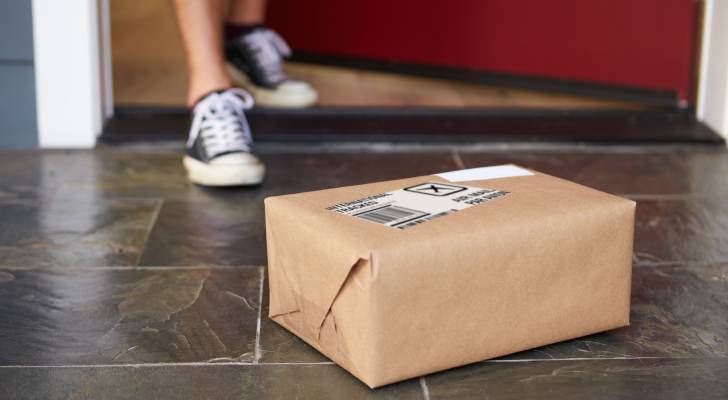Unexpected Package Delivered? Could Be a Scam!

Ray Simmons was puzzled when an Amazon delivery with beet chews appeared at his doorsteps.
"I thought perhaps a member of my family might have been pulling a prank on me, suggesting that I should improve my eating habits," Simmons disclosed during the interview. WSB-TV Atlanta .
Don't miss
- I am 49 years old and haven't saved anything for retirement yet—what should I do? Stay calm. Below are some suggestions: 5 of the simplest methods to quickly get back on track
- Earn possible quarterly returns from this $1 billion private real estate fund — even if you're not a millionaire. Here’s how you can begin with just $10.
- You’re likely paying too much for this essential cost, and due to Trump’s tariffs, your monthly expenses might increase even further. Here’s how just 2 minutes can safeguard your finances immediately today.
However, the package was not meant as a prank. As Simmons would later discover, he had unknowingly been drawn into a scam referred to as "brushing." This fraudulent practice apparently aims at exploiting customer information. manipulate online product reviews , according to the U.S. Postal Inspection Service (USPIS).
Even though this might appear relatively innocuous, the USPIS has cautioned individuals nationwide: should you get a parcel that was not ordered, refrain from scanning any accompanying QR codes.
What is the toothbrush fraud?
The brushing fraud entails third-party vendors on e-commerce websites sending unwanted, inexpensive products to individuals chosen at random after their personal details were discovered online.
After the item has been dispatched, fraudsters post counterfeit five-star reviews online under the guise of the recipient's identity or through a fabricated account designed to mimic the recipient. This strategy aims to boost the seller’s product popularity and ratings, thereby increasing their exposure and sales potential.
They did not make an order; instead, they got something delivered, typically a common household object of minimal value," explained U.S. Postal Inspector David Gealey. "These individuals possess your personal data, which isn't hard to obtain since searching for a name and address online is quite simple. All this info seems to be readily available on the internet, correct?
Even though the brushing scam may not result in direct monetary losses, it indicates that your personal data—such as your name and address—is being utilized without your consent. This personal information might be floating around in insecure databases or falling into the hands of malicious individuals on the internet.
Everything mentioned here should raise alarm bells, yet the risks associated with this fraud escalate significantly if the victim fails to remain vigilant.
Read more: Looking for an additional $1,300,000 for your retirement savings? According to Dave Ramsey, it's possible. This 7-step strategy 'guarantees success' for eliminating debt and achieving wealth in America. —and anyone can achieve this
The genuine danger: QR codes
Postal inspectors warn that the actual risk arises when such parcels contain a QR code, prompting recipients to scan for additional details or to verify the delivery. These codes may direct individuals to harmful sites designed to pilfer personal information, deploy malware, or engage in phishing activities aimed at obtaining confidential data.
"We advise our customers to exercise caution: never scan any QR codes on the packages, as these codes can occasionally direct you to harmful websites," Gealey cautioned.
Luckily, Simmons' package didn't include a QR code. Nonetheless, he proceeded with several precautionary measures to safeguard himself and verify that his Amazon and bank accounts were not breached.
What should you do when you get a parcel you never asked for?
Getting an unsolicited parcel might suggest that your private data is being exploited. Below are the recommendations from USPIS.
Avoid scanning QR codes: As mentioned earlier, scanning QR codes from untrustworthy sources can result in numerous problems, potentially leading to the theft of personal information or malicious software being installed on your devices.
Do not send back the item: You aren't required by law to send back things you didn't ask for. It’s fine to keep them or throw away the packaging, just avoid following any directions included with the item.
Check your financial accounts: Examine your online banking and credit card statements, along with your online shopping profiles and Amazon account activity right away to confirm that your accounts have not been compromised.
Report the package: Inform your nearby law enforcement agency, the US Postal Inspection Service, and/or the Federal Trade Commission regarding the unexpected parcel. By reporting this delivery, you could assist investigators in their probe and possibly stop further incidents of this nature.

Post a Comment for "Unexpected Package Delivered? Could Be a Scam!"